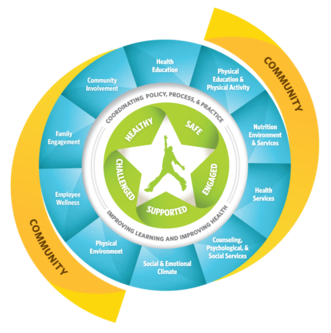The Every Student Succeeds Act (ESSA) is the latest reauthorization of the 1965 Elementary and Secondary Education Act (ESEA) and was approved by the U.S. Congress and signed into law in December 2015. ESSA reauthorizes the nation’s national education law and longstanding commitment to equal opportunity for all students and replaces the No Child Left Behind Act of 2001.
WS/FCS Every Student Succeeds

The Every Student Succeeds Act (ESSA) - WS/FCS ESSA Plan/Comprehensive Continuous Improvement Plan (CCIP)
What does this mean for North Carolina?
On June 5, 2018, the U.S. Department of Education approved North Carolina’s Every Student Succeeds Act (ESSA) state plan. The plan calls for the state to support individualized instruction and learning for both students and educators and continues to explore and promote emerging initiatives for personalized learning. ESSA provides the state with this opportunity via the commitment in the plan to continuous innovation for students and educators.
The state’s plan includes these key elements:
Provides a concise statement of the innovation the state expects for students, including using adaptive environments, personalized learning, and empowered educators.
Establishes 10-year goals for student performance using end-of-grade and end-of-course exams and goals for closing achievement gaps
Continues the School Performance Grades model, in which schools earn a A-F grades based on proficiency measures and student-growth targets.
For NC’s plan and the progress to approval, visit NC Department of Public Instruction’s ESSA Resources.
What does this mean for Winston-Salem/Forsyth County Schools?
Under the Every Student Succeeds Act (ESSA), a local educational agency (LEA) may receive a Title I subgrant if it has submitted a district plan (hereafter referred to as the LEA Title I Plan) to the State educational agency (SEA) for approval by the SEA. The LEA Title I Plan may be submitted to the SEA as part of a consolidated application. The NC Department of Public Instruction’s consolidated application includes multiple federal programs for which WS/FCS applies. The programs include:
Title I, Part A - Improving Basic Programs Operated by Local Educational Agencies
Title II, Part A - Building Systems of Support for Excellent Teaching and Leading
Title III – Language Instruction for English Learners and Immigrant Students
Title IV, Part A – Student Support and Academic Enrichment Grants
Title IV, Part B – 21st Century Community Learning Centers
Beginning with the 2017-18 school year, the requirements for LEA Title I Plans under the ESSA were addressed through the web-based grants management system, the Comprehensive Continuous Improvement Plan (CCIP). Some requirements will be addressed in the Planning Tool and others will be addressed in the Funding Application for Title I, Part A. The state’s goal for utilizing CCIP is to consolidate the planning and application process in order to reduce duplication of information across the state.
Since ESSA reinforces federal support for early learning and provides opportunity to strengthen the birth-through-third grade continuum - a critical strategy to improve third grade reading proficiency, LEA plans will incorporate early learning components.
ESSA requires each LEA Title I plan must be developed with timely and meaningful consultation with teachers, principals, other school leaders, paraprofessionals, specialized instructional support personnel, charter school leaders (in a local educational agency that has charter schools), administrators, other appropriate school personnel, and parents. Stakeholders for early learning may include, but are not limited to, Head Start, Title I, Smart Start, elementary school principals and teachers, child care administrators and teachers, Child Care Resource and Referral, Exceptional Children, McKinney Vento, NC Pre-K Committee, family engagement professionals, community college system, community organizations supporting dual language learners, health care providers, existing early childhood collaboratives (e.g., Campaign for Grade-Level Reading), higher education and others.
As appropriate, the plan should include a description of how the LEA Title I Plan is coordinated with other programs under this Act, the Individuals with Disabilities Education Act, the Rehabilitation Act of 1973, the Carl D. Perkins Career and Technical Education Act of 2006, the Workforce Innovation and Opportunity Act, the Head Start Act, the McKinney-Vento Homeless Assistance Act, the Adult Education and Family Literacy Act, and other Acts as appropriate.
Adapted from the NC Department of Public Instruction LEA Plans
More Information
NC State Information
WS/FCS District Information
Student Achievement
2017-18 Read to Achieve Grades 1 & 2 District Results
2017-18 Read to Achieve Grade 3 District Results
EOG & EOC Disaggregated Test Results
Graduation Rate
WS/FCS Graduation Initiatives
Closing the Achievement Gap
Parent Involvement
Other External Sources
